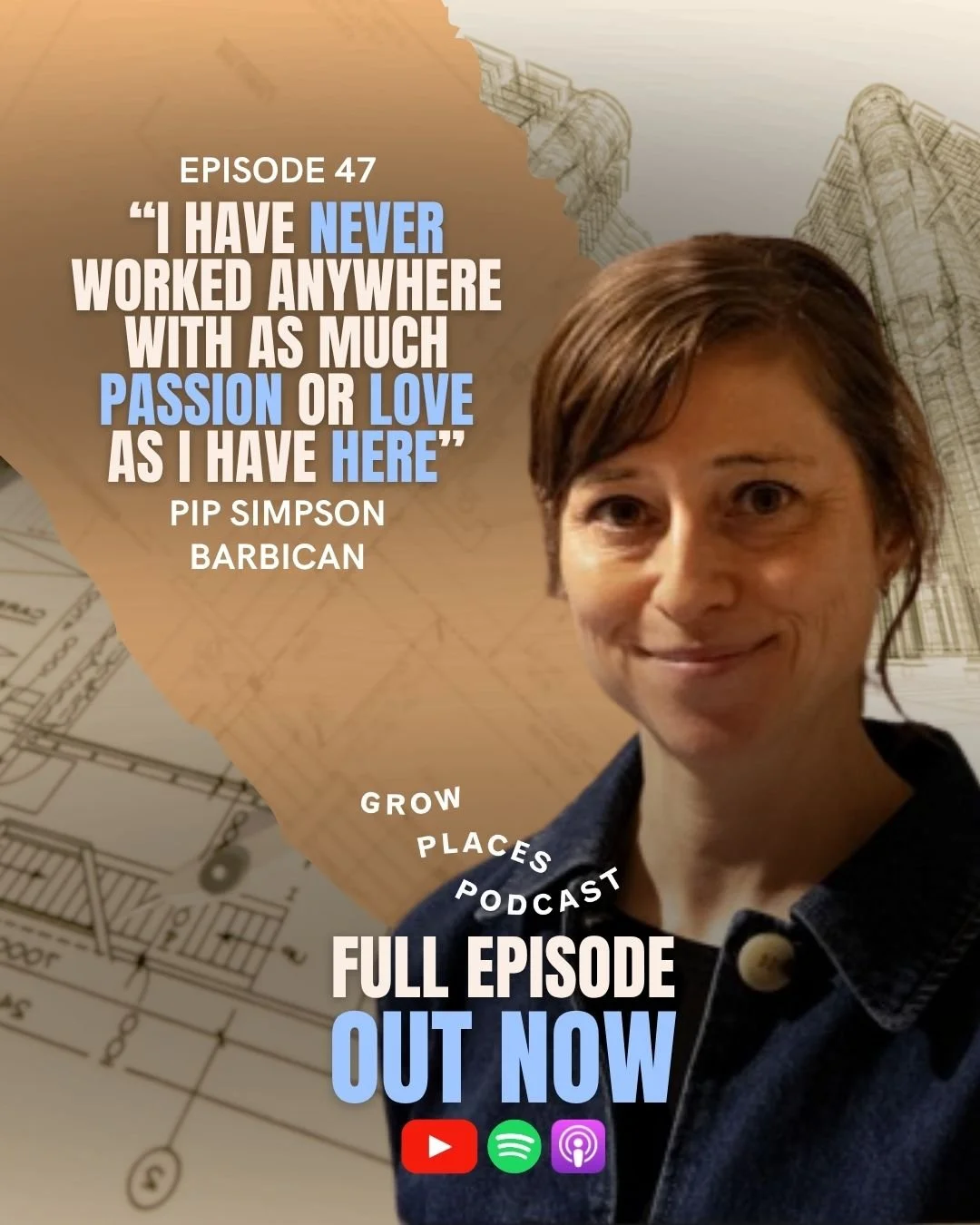What Is the Value of Anything Now?
“Architecture isn’t drawing.
It’s relationships.”
- Keir Regan-Alexander, Arka Works
“You don’t need a ticket to sit in the conservatory.”
- Pip Simpson, The Barbican
As our cities shift, digitise and grow, two questions keep returning. What are we building, and why?
This month, we spoke to two people exploring that question from very different positions.
Pip Simpson, Director at the Barbican, is leading one of the country’s most sensitive cultural capital projects, a transformation of one of London’s most iconic and contradictory buildings.
Keir Regan-Alexander, Founder of Arka Works, is rethinking the role of the architect, asking what happens when the core tools of design are automated, and what value remains when authorship is no longer a given.
One speaks from within public culture. The other from the edges of professional design practice. Yet both are wrestling with the same concern — what buildings mean, and what we mean by value.
Civic buildings, civic responsibility
The Barbican was always bold.
It was never just a destination. It was a vision: concrete, cultural and collective. Now, it faces the delicate challenge of being reimagined for the future without being erased in the process.
“The building tells you what it is, even if you try to fight it.”
Pip is responsible for a major public capital project that sits at the intersection of memory, identity and use. It is not just about fixing the leaks or updating accessibility. It is about rediscovering what it means for a civic building to hold space for a changing city.
This means co-design with young Londoners. Rethinking entrances, wayfinding and ownership. Creating more informal spaces. Restoring the conservatory, not as an exhibit, but as a place to pause and belong.
“We’re opening up the back doors and letting people in.”
Pip’s approach reminds us that value in public buildings is not measured only in footfall or revenue. It lives in how people feel in the space. Whether they see themselves in it. Whether they come back.
You can listen to Pip’s Episode 47 at www.growplaces.com/podcast
Who gets to design, and what for?
While Pip is holding one legacy carefully forward, Keir is looking out for another — the practice of architecture.
After leaving a leading London firm, he founded Arka Works to explore what architecture might become if it were centred on care, time and trust, rather than speed, procurement metrics and polish.
He believes that generative AI is not the threat. The real threat is a model that lost its meaning long ago.
“We were spending more time chasing work than designing.”
AI simply exposes the system. If architects are only producing outputs, those outputs can be automated. But if architecture is, as he puts it, a way of holding complexity, sitting with discomfort, and building relationships, then its relevance only deepens.
“You can’t be scared of the mess.”
This is not abstract. It is about how design teams are formed, how fees are set, how clients engage and how projects move. Keir wants to see a profession that takes greater responsibility for the aesthetics and detail of what it produces.
You can listen to Keir’s Episode 48 at www.growplaces.com/podcast
What Are We Really Growing?
Both conversations arrive at the same conclusion.
Whether you are stewarding a major cultural asset or rethinking the role of a designer, the work is the same. To take responsibility.
Responsibility for legacy. Responsibility for experience. Responsibility for how something feels and is delivered.
“Architecture is a practice of trust.”
- Keir Regan-Alexander
“It’s the public spaces that people hold emotionally.”
- Pip Simpson
At a time when planning delays, economic pressures and technological change pull us toward efficiency and speed, these voices remind us that meaning still matters most.
Context Check
As London contends with a slowing development pipeline, fragile investor confidence and under-pressure local authorities, these questions feel urgent.
The Barbican’s renewal sits within a wider debate about the role of cultural institutions in regeneration, and how public space is shaped or lost in the process. Meanwhile, practices like Arka are questioning whether design, as a discipline, can adapt meaningfully to a world where its tools, timelines and economies are shifting.
The real question is not how we grow places. It is how we stay true to the people, the stories and the ambition behind them and how we value what people and places need most.
Three Things to Take With You
Value is not output
It is belonging, memory and generosity. If people do not feel welcome, it is not working, no matter how well it performs on paper.
Hold complexity with care
Big projects carry tension. Do not rush past it. Let it shape better, slower outcomes.
Share the authorship
Invite others in early. From co-design to decision-making, good places are grown in company.
Grow Places Reflections
People before project
Both guests focus on the human experience of place, not just technical delivery.
Be honest about what you’re changing
Pip’s work respects what came before while making room for what needs to come next.
Ask what the tools are for
Keir challenges us to think about whether our systems serve the work, or just reinforce old habits.
Make public space feel truly public
From concert halls to neighbourhoods, access must be more than symbolic.
Create for meaning, not just metrics
Design matters. But so does who it is for, who decides and how it is felt.
Missed the conversations?
Catch the full podcast episodes at www.growplaces.com/podcast


